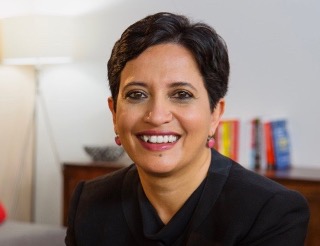Building a Global AI Venture for Medical Imaging Analysis from India: Prashant Warier, CEO of Qure.ai (Part 3)
Sramana Mitra: How long did it take you to build a product based on this data?
Prashant Warier: We started in 2016 — a lot of the data acquisition happened by mid-2017. In the first year of Qure, I was on the road working on getting more data. As a data scientist, I knew that data was key. You see algorithms built on a hundred images that don’t work. We spent time getting access to a lot of data. 2017 was when we started building our core products.
One is for interpreting chest X-rays. Chest X-ray is the most common imaging modality. There are about 1.3 billion chest X-rays taken every year around the world. If you look at India for example, most X-rays are not reported by radiologists. There is such a high volume and radiologists are busy with their CT scans, MRIs, and ultrasounds.
Similarly, if you look at most geographies, X-rays are not reported well or not reported at all. Error rate is anywhere between 20% and 23%. It’s a very basic modality. X-rays came in the 1800s. It’s old. It’s cheap. X-ray is still valuable, but with the increasing volume, radiologists don’t have the time to interpret that.
Sramana Mitra: It’s a perfect use case for AI.
Prashant Warier: Exactly. We said, “Let’s figure out how to automate a lot of X-ray reporting. Can we create a full report?” The hypothesis has always been to make a clear reporting similar to pathology reporting. Pathology reporting used to be done manually in the 80s. You used to count the number of white blood cells, red blood cells, and platelets using a microscope. It became fully automated in the 2000s when machines came in.
Even though it’s automated, you still have a pathologist sign off on that. There is a physical signature. We wanted to get X-ray reporting to the point where you can rely on a machine to give you the report. Technology is close to that.
Sramana Mitra: Tell me about the go-to-market of this one. You had data from various hospitals. Did they become customers?
Prashant Warier: When we got the data, one of the clauses was that we had to provide it for free. They became users. We built our technology and commercialized it starting in 2018. In 2018, our first customer started using our X-ray solution. It’s a large radiology group in India. The term that we used is area under the curve (AUC) which is a term we use to measure accuracy. The accuracy was about 90% to 95% on the dataset we had.
We deployed it to the radiology group. The accuracy there was about 65% to 70%. This was early days, so we didn’t have all the data that we needed. We realized that we had to add more data. By the end of 2018, we got to a point where our model was more robust.
That’s when we got our first paying customer. I’ll give you the story about that first paying customer. This is a tuberculosis screening program in the Philippines. Tuberculosis is still rampant in the more resource-constrained areas of the world from India, Southeast Asia, and South Africa. There are about 10 million to 11 million TB cases every year. It’s still a problem. A lot of people still die from TB.
This customer was running TB screening. They had these four mobile vans. These vans have an X-ray system inside the van. They would start from Manila and travel around the country for about two weeks. Then they come back to Manila. Every day, they are screening about 200 to 300 people. Let’s say 1,400 in a week. They had many X-rays. There is no radiologist in the van. They collect the X-rays at the end of two weeks and then send them out for interpretation.
Back in 2018, it took them four to five weeks to get that X-ray read. A patient who came in on day one would get the result four weeks later. That patient is already gone or has started treatment. When we started deploying, we said we could get you the report in one minute. That was the first customer.
This segment is part 3 in the series : Building a Global AI Venture for Medical Imaging Analysis from India: Prashant Warier, CEO of Qure.ai
1 2 3 4 5 6 7
Featured Videos
Can 1M/1M Help Me Raise Money?
How Does 1M/1M Democratize Entrepreneurship Education?
How Does 1M/1M Democratize Management Consulting?
When Is The Right Time To Join 1M/1M?
Can 1M/1M Help Me With Business Development?
Can 1M/1M Help Me With Market Sizing?
Can 1M/1M Help Me Validate My Product?
Will I Have Private 1-on-1 Sessions In 1M/1M?
How Does 1M/1M Help Entrepreneurs Connect With Silicon Valley?
Mentoring or Consulting?
Why Does 1M/1M Charge $1000 a Year?
Why Does 1M/1M Partner With Local Organizations?
Why Don\’t Mentoring Networks Work?
Why Is It Important To Study With 1M/1M Now?
Dan Stewart Story
Vikrant Mathur Story
